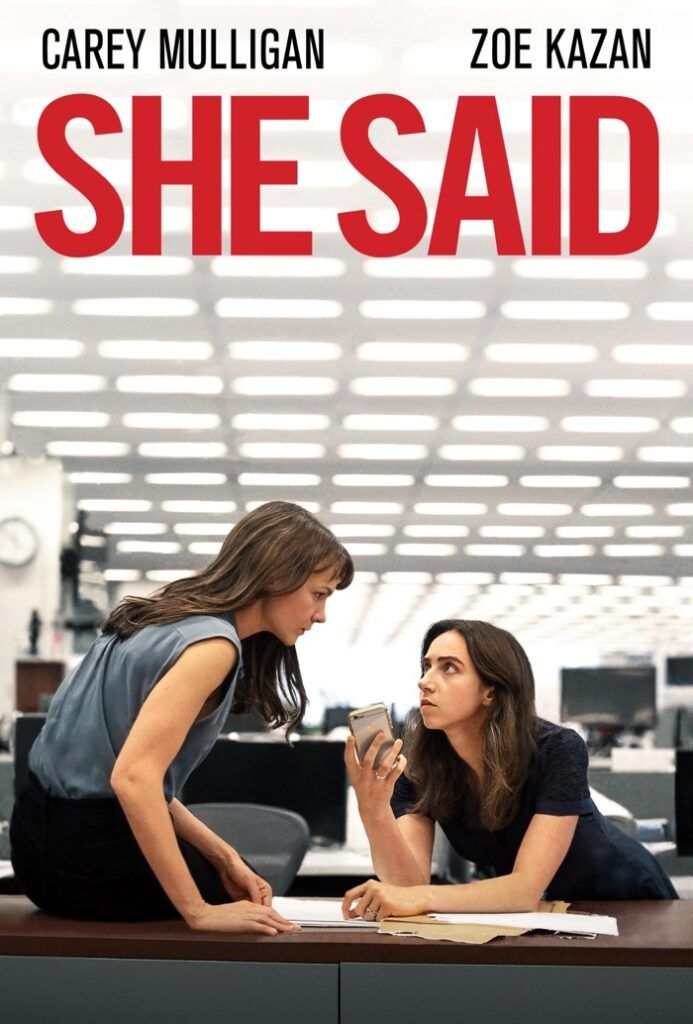By Hannah Rainford | Staff Writer

Poignant yet subdued, the 2022 biographical film “She Said” documents the journey to the conviction of Hollywood mogul Harvey Weinstein for perpetrating decades of sexual assault, as well as the rise of the “Me Too” movement.
The film follows New York Times reporters Megan Twohey and Jodi Kantor (played by Cary Mulligan and Zoe Kazan) as they seek to break a massive story and the silence surrounding sexual assault. Produced by Brad Pitt and directed by Maria Schrader, the film is based on the 2019 novel written by Twohey and Kantor.
Named one of the best films of 2022 by the American Film Institute, Schrader’s oeuvre tells a story of even greater triumph. Following the New York Times monumental story in 2017, 82 women came forward with allegations against Harvey Weinstein. This set a multitude of workplace and legal reforms in motion, as well as leading Weinstein to a 23-year sentence.
The first movie to ever be shot in the actual New York Times building and utilize its real offices, “She Said” is a captivating glimpse into the real world of a reporter, and highlights the thrills and struggles that fill the life of a journalist, along with those of a professional woman.
This is, perhaps, what renders the film so incredibly impactful, as essentially two narratives weave together to create the brilliant tapestry that is this film, one being the past horrors of women brutalized by Weinstein, the other being the present adversity faced by the various women depicted. Whether it’s postpartum depression, the fear of walking alone on a darkened city street or a mastectomy, Schrader drives home the truism that sexual assault is only one of the many hardships battled throughout womanhood.
To that effect, “She Said” gives voice to several topics rarely discussed in most films, while expertly telling Twohey and Kantor’s story.
“She Said” also focuses on the small moments, those deeply humanizing, such as the long-drawn sigh after a dropped call, or the practiced placing of reading glasses prior to editing a groundbreaking piece of journalism. It’s this careful retention of what is often extracted from the filmmaking process that allows Schrader’s work to connect so viscerally with its viewer, as it’s composed of life and the beautiful mundanities which characterize all of ours.
